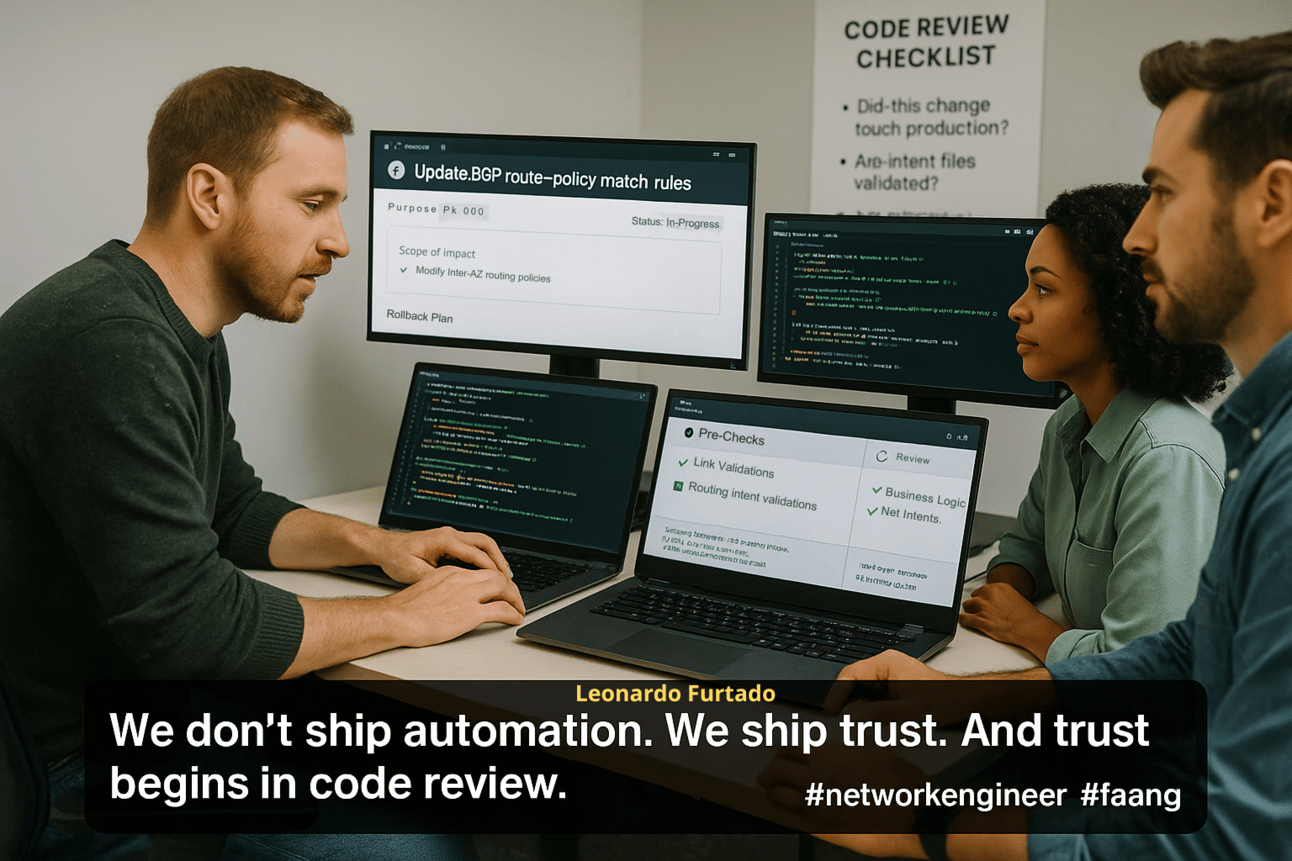1. From Wizards to Engineers
There was a time, still not too long ago, when network engineers were seen as infrastructure wizards. They’d SSH into a device, type incantations in vendor-specific dialects, and restore connectivity like magic. The job was an art form, built on tacit knowledge, CLI muscle memory, and heroic interventions at 2 a.m.
But magic doesn’t scale.
As networks evolved, becoming larger, more dynamic, and more software-defined, the CLI wizardry that once held things together started to become the problem. What used to be craft is now risk. What once was expertise has become a source of fragility.
And so network engineers evolved.
We began writing tools. Then modules. Then full systems. We started abstracting policy, templating configuration, automating remediations. The terminal gave way to the IDE. The runbook gave way to the CI pipeline.
We stopped configuring networks and started engineering them.
This shift, from artisanal command-line work to disciplined infrastructure software development, is one of the most significant changes to have impacted network operations in decades. It’s also a cultural shock.
Because once you stop treating automation as a helper script and start treating it as production code, everything changes. It’s no longer enough for code to just "work." It needs to be:
Understandable to others.
Safe in production.
Tested before impact.
Traceable over time.
You’re not just moving packets anymore. You’re shipping logic that decides where those packets go, and what happens when things fail.
And that logic, just like any system at scale, must be designed, versioned, reviewed, and deployed with the same care as any backend service in a hyperscaler’s stack.
The problem here is that most network teams haven’t fully caught up. They’re still working in that blurry space between wizardry and engineering; still writing critical systems logic in one-off Python scripts.
Still skipping code reviews because “it’s just automation.”
This is where things start to break, not because people aren’t smart or dedicated, but because engineering without process can’t scale.
What’s needed now is discipline; a mindset shift. A culture that understands: if automation drives production, then every change to it is a production change.
And that means… we need design and code reviews.
Let’s take a moment to explore what the old world looked like, how automation was born in the shadows, and why that’s no longer enough.
Subscribe to our premium content to read the rest.
Become a paying subscriber to get access to this post and other subscriber-only content. No fluff. No marketing slides. Just real engineering, deep insights, and the career momentum you’ve been looking for.
UpgradeA subscription gets you:
- ✅ Exclusive career tools and job prep guidance
- ✅ Unfiltered breakdowns of protocols, automation, and architecture
- ✅ Real-world lab scenarios and how to solve them
- ✅ Hands-on deep dives with annotated configs and diagrams
- ✅ Priority AMA access — ask me anything


